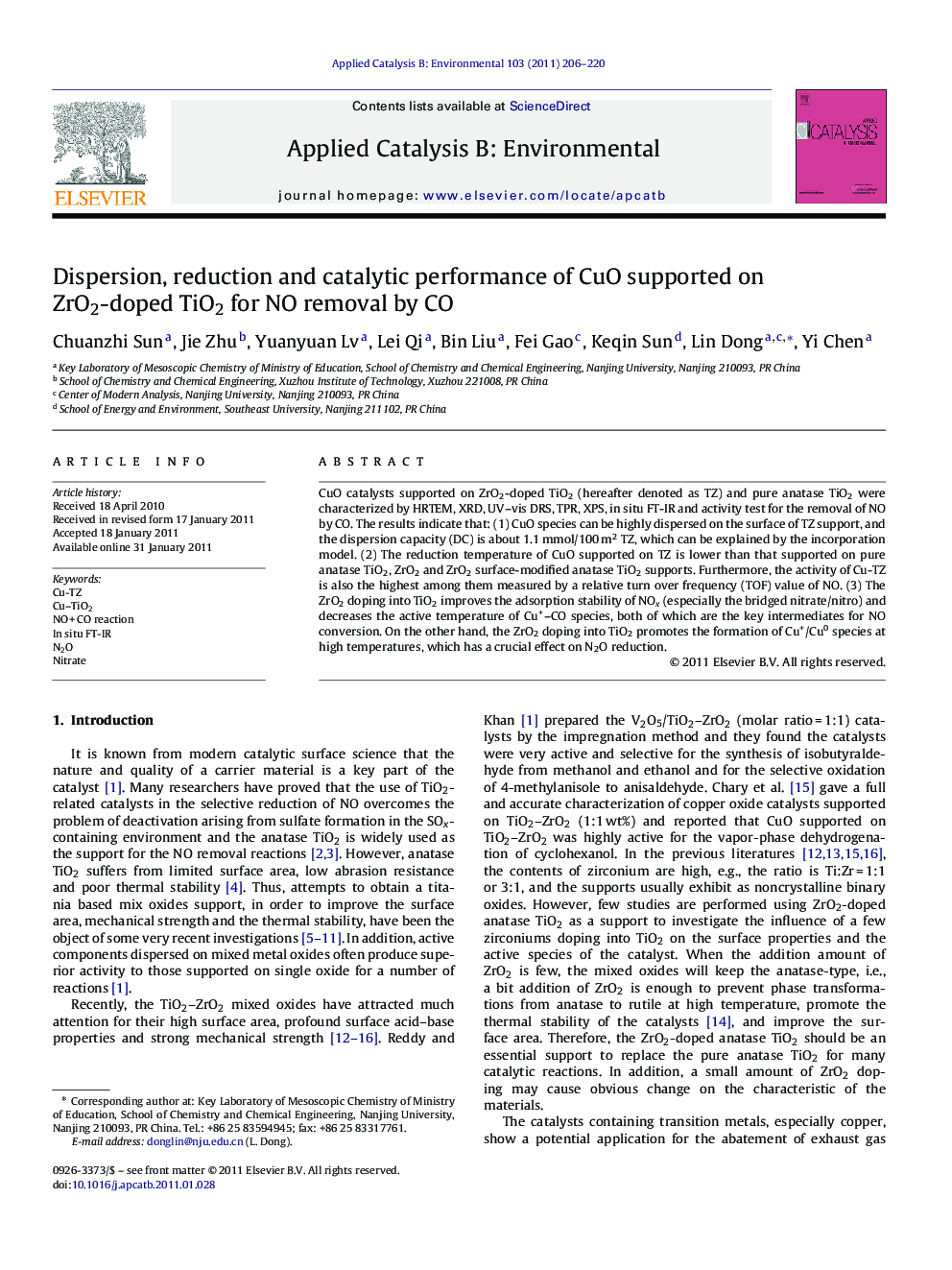| Article ID | Journal | Published Year | Pages | File Type |
|---|---|---|---|---|
| 47011 | Applied Catalysis B: Environmental | 2011 | 15 Pages |
CuO catalysts supported on ZrO2-doped TiO2 (hereafter denoted as TZ) and pure anatase TiO2 were characterized by HRTEM, XRD, UV–vis DRS, TPR, XPS, in situ FT-IR and activity test for the removal of NO by CO. The results indicate that: (1) CuO species can be highly dispersed on the surface of TZ support, and the dispersion capacity (DC) is about 1.1 mmol/100 m2 TZ, which can be explained by the incorporation model. (2) The reduction temperature of CuO supported on TZ is lower than that supported on pure anatase TiO2, ZrO2 and ZrO2 surface-modified anatase TiO2 supports. Furthermore, the activity of Cu-TZ is also the highest among them measured by a relative turn over frequency (TOF) value of NO. (3) The ZrO2 doping into TiO2 improves the adsorption stability of NOx (especially the bridged nitrate/nitro) and decreases the active temperature of Cu+–CO species, both of which are the key intermediates for NO conversion. On the other hand, the ZrO2 doping into TiO2 promotes the formation of Cu+/Cu0 species at high temperatures, which has a crucial effect on N2O reduction.
Graphical abstractFigure optionsDownload full-size imageDownload as PowerPoint slideResearch highlights► The dispersion capacity (DC) of copper oxide on the surface of TZ is about 1.1 mmol CuO/100 m2 TZ, which is basically in agreement with the value predicted by the incorporation model. When the CuO loadings are lower than DC, the activities increase very fast with the amounts of CuO increasing, whereas when the CuO loadings are higher than DC, the activities increase very slowly, implying that the crystalline copper oxide species on TZ support take low effect for the NO + CO reaction. ► Compared with the copper oxides supported on pure TiO2 and ZrO2 surface-modified TiO2, copper oxides supported on ZrO2-doped TiO2 exhibit significantly different reduction properties. ► The ZrO2 doping improves the adsorption stability of NOx, which is an important factor of NO conversion. ► Cu-TZ catalysts have superior activity and selectivity to common Cu–TiO2 catalysts for the NO + CO reaction.
